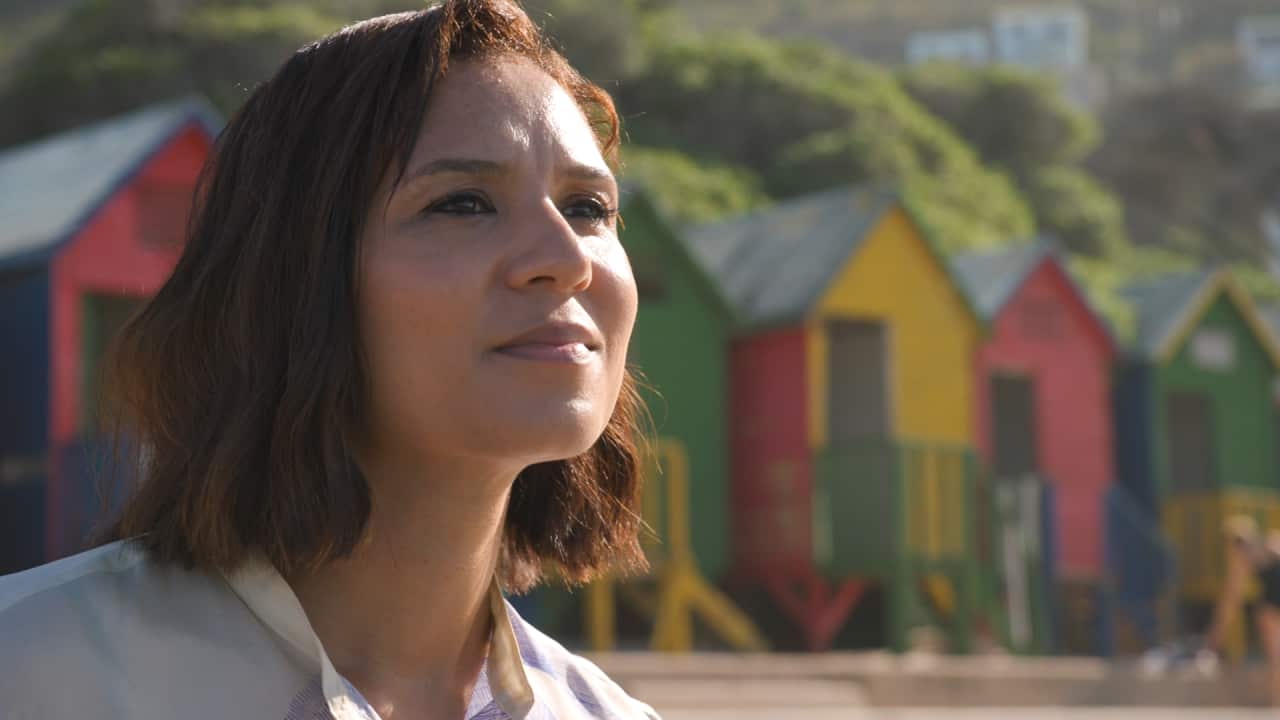Key Points
- Janice Petersen travelled to South Africa, the homeland of her parents.
- She wants to find out if the kids who grew up in the 30 years since apartheid have freedom to love whoever they want
“No one is born hating another person because of the colour of his skin, or his background, or his religion. People must learn to hate, and if they can learn to hate, they can be taught to love, for love comes more naturally to the human heart than its opposite.”
You can probably guess who the quote above is from.
Nelson Mandela is elevated to almost mythic status in terms of his enduring anti-racism legacy.
His presence looms large at the mere mention of South Africa. On a recent trip there for Dateline, I met people using his dream of a Rainbow Nation as a blueprint for how they live and love.
This was a special assignment for me because South Africa is a huge part of who I am. I felt unbridled joy meeting my extended family in Cape Town for the first time as a kid. But witnessing and experiencing apartheid on that trip made me feel much smaller than my seven years of age.

Janice, aged seven with pigtails, pictured with family in South Africa.
Back then, skin colour determined how and where you lived and who you loved.
Apartheid is an Afrikaans word which means “apartness”. It was a political system which ranked people according to their race and skin colour. Whites were at the top, Indians and mixed race people like me and my family were classified as “coloured” and were piled in the middle, and the majority Black population were slung at the very bottom. Anyone who wasn’t white was stripped of basic human rights but Black Africans, the original inhabitants of the land, were the most discriminated against and disenfranchised.
Apartheid ended three decades ago but evidence of that racist system persists. Today, wealthier enclaves are still largely the domain of whites. Some will talk with contempt about an unjust system which has unfairly elevated Black people to more salubrious postcodes, but I didn’t see a single white face in the many kilometres of poor townships I drove past in Cape Town and Durban on my recent trip.
The history books might say it’s a relic of the past, but the architecture of apartheid is yet to completely crumble.
In Durban, a city with turbulent history of violent race riots, I met a couple who appear to embody the spirit of the “new” South Africa.
Ndaba is Black African and Sarah is white. They’re busy darting in and out of the house with arms laden with bowls, bread and boerewors (South African farmers sausage). I’m about to experience South Africa’s version of an Aussie BBQ, a braai.
They organise these meals for other young people from different backgrounds in the hope of fostering a sense of racial harmony and togetherness.
They are charming and charismatic and don’t baulk at the idea of being accidental brand ambassadors for inter-racial love.
“One of the things that's been important to us throughout our marriage whether we like it or not, is that we do represent something unusual. We don't want to talk about it the whole time, but we do want to model that,” Sarah said.

Sarah and Ndaba Mkhize.
The laughs come easily as everyone pitches in to prepare for the meaty feast.
These young people are part of the estimated 40 per cent of the population comprising the “born frees”. The generation born after the fall of apartheid and Nelson Mandela becoming the nation’s first democratically elected Black President.
Around a long outdoor table now groaning with food and festooned with candles, they talk with reverence about their hosts and hopes for the future.
“Sarah and Ndaba always say, “Hey, we want you all here and I think the whole point is having the intention to create a space for community of any shape or form. We all want to gather’,” said ginger haired Steve.
Nick, who’s from an Indian background, has a Mozambican girlfriend and said his generation is leading by example when it comes to uniting South Africans.
“We're teaching the older generation that it's okay to have a different race as your spouse as your future, because that just shows where the country as a whole is heading, and that's what Nelson Mandela wanted,” he beamed.
This scene of magnetic optimism is willing me to believe that the dream of the Rainbow Nation is still within reach. The economic and class divides are still evident but there are at least a few people carrying Mandela’s mantle of teaching love not hate.










